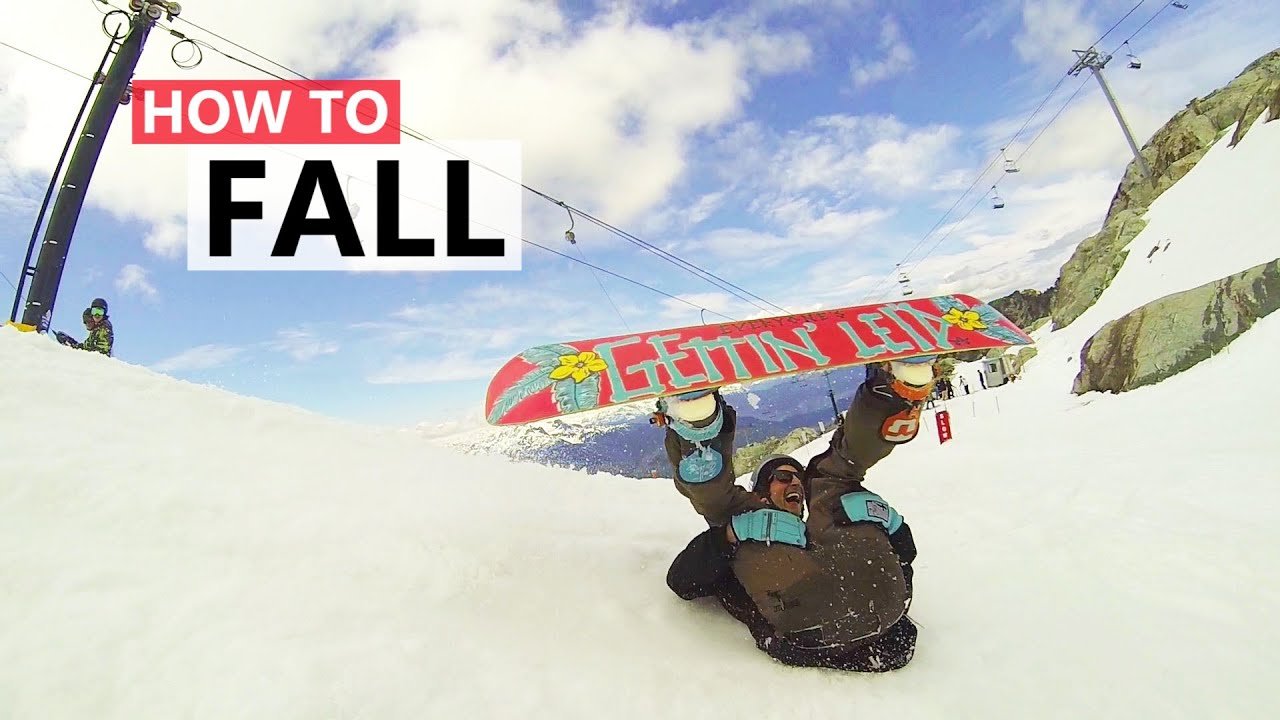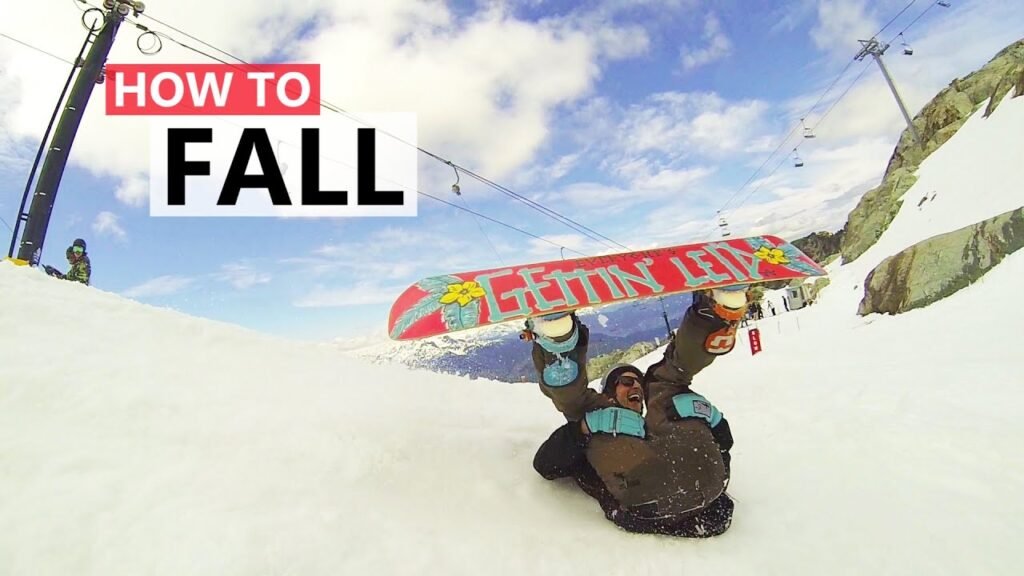
How to Fall on a Snowboard
In this video by SnowboardProCamp, they provide helpful tips on how to fall safely on a snowboard. Falling is a natural part of learning to ride or attempting new tricks, but having the right techniques can greatly reduce the risk of injury. The video highlights two common ways to fall, catching your toe edge and falling forward, which can potentially hurt your wrists, or catching your heels and falling backward, putting your tailbone at risk. SnowboardProCamp emphasizes the importance of progressively advancing your riding skills while minimizing the chance of falling. They also mention that if you do happen to fall, there are tools and techniques to help keep you safe. So, if you’re a beginner or looking to brush up on your snowboarding skills, this video offers valuable insights for a safer and more enjoyable experience on the slopes.

Introduction
Snowboarding is an exhilarating sport that comes with its own set of challenges, including the potential for falls and injuries. Learning how to fall properly is an important skill that every snowboarder should master. In this article, we will explore the importance of learning how to fall, techniques for falling on both the toe and heel edge, and how to progress safely to minimize falling. We will also discuss the tools and gear that can help keep you safe during falls, as well as provide tips for practicing falling in a controlled environment.
Importance of Learning How to Fall
Reducing the risk of injuries
Learning proper falling techniques can help reduce the risk of injuries while snowboarding. Falls are inevitable, especially when learning new tricks or pushing your limits on the slopes. By knowing how to fall safely, you can minimize the impact on your body and decrease the chances of sprains, fractures, or other more serious injuries.
Boosting your confidence
Falling on a snowboard can be intimidating and may shake your confidence. However, by learning how to fall correctly, you can regain your confidence and feel more secure on your board. Knowing that you have the skills to fall safely and minimize harm can give you the peace of mind to take risks and progress in your snowboarding journey.
Minimizing downtime
When you fall on a snowboard, it’s not just about the physical impact; there’s also the downtime spent recovering from injuries. Learning how to fall properly can help you minimize downtime by reducing the severity of injuries or even avoiding them altogether. This means more time on the slopes and less time on the sidelines.
Understanding the Toe Edge Fall
Causes of catching your toe edge
Catching your toe edge occurs when the toe side of your snowboard catches the snow, leading to a sudden stop or loss of balance. This can happen when you lean too far forward, have improper weight distribution, or fail to properly engage your edges while turning.
Recognizing the signs
To prevent catching your toe edge, it’s important to recognize the signs that you may be at risk. These signs include leaning too far forward, having a straight or extended front leg, and feeling a loss of control while traversing or turning.
Preventing toe edge falls
To prevent toe edge falls, it’s crucial to maintain good balance and weight distribution on your snowboard. This includes keeping your weight centered over your board, maintaining a slight bend in your knees, and engaging your edges properly during turns. Practicing these techniques and staying aware of your body position can help you avoid catching your toe edge.
Techniques for Falling on the Toe Edge
Protecting your wrists
When falling forward on your toe edge, your natural reaction may be to put your hands out to break your fall. However, this can result in wrist injuries. To protect your wrists, it’s important to wear wrist guards, which provide support and cushioning to absorb impact. Wrist guards can greatly reduce the risk of wrist fractures or sprains when falling on your snowboard.
Rolling with the fall
Another effective technique for falling on your toe edge is to roll with the fall. Rather than resisting the fall or trying to brace yourself with your hands, try to tuck your chin to your chest, roll onto your side, and use your shoulder and hips to absorb the impact. Rolling with the fall helps distribute the force across a larger surface area of your body, reducing the risk of injuries.
Using forearm guards
Forearm guards are another protective gear option to consider when falling on your toe edge. These guards provide padding and support to your forearms, reducing the risk of impact injuries. By wearing forearm guards, you can add an extra layer of protection to your arms while falling on your snowboard.
Understanding the Heel Edge Fall
Causes of catching your heel edge
Catching your heel edge occurs when the heel side of your snowboard catches the snow, causing you to fall backward. This can happen if you lean too far back, have improper weight distribution, or fail to engage your edges properly.
Recognizing the signs
To prevent catching your heel edge, it’s important to be aware of the signs that indicate you may be at risk. These signs include leaning too far back, having a straight or extended back leg, and feeling a loss of control while riding or turning.
Preventing heel edge falls
To prevent heel edge falls, it’s crucial to maintain good balance and weight distribution on your snowboard. Keep your weight centered over your board, maintain a slight bend in your knees, and engage your edges properly during turns. By practicing proper technique and staying mindful of your body position, you can reduce the risk of catching your heel edge.
Techniques for Falling on the Heel Edge
Protecting your tailbone
Falling backward on your heel edge can result in injuries to your tailbone. To protect your tailbone, it is recommended to wear padded shorts. These shorts are equipped with extra padding in the rear area, providing cushioning and impact absorption during falls. By wearing padded shorts, you can greatly reduce the risk of tailbone injuries while snowboarding.
Bending your knees and rolling
When falling backward on your heel edge, try to bend your knees as you go down. This helps absorb the impact and distributes the force across your leg muscles, reducing the strain on your tailbone. Additionally, rolling with the fall by tucking your chin to your chest, rolling onto your side, and using your shoulder and hip to absorb the impact can help minimize injuries.
Using padded shorts
In addition to protecting your tailbone, padded shorts can provide extra cushioning and protection to your hips and thighs. These areas are also vulnerable to impact injuries when falling on your heel edge. By wearing padded shorts, you can reduce the risk of bruises, sprains, or fractures in these areas and make falling on your snowboard a safer experience.
Progressing Safely to Minimize Falling
Mastering the basics
One of the best ways to minimize falling on a snowboard is to master the basics before attempting more advanced maneuvers. Spend time honing your balance, edge control, and turning skills on beginner slopes. By mastering the fundamentals, you build a strong foundation that allows you to progress with more confidence and stability.
Taking small steps
When learning new tricks or techniques, it’s important to take small steps and gradually increase the difficulty level. Rushing into advanced maneuvers without proper skill development increases the chances of falling and sustaining injuries. By taking incremental steps and practicing patience, you can minimize falling and progress safely in your snowboarding journey.
Getting proper instruction
Seeking proper instruction from qualified snowboarding instructors is crucial for learning how to fall safely and improving your overall technique. Instructors can provide valuable guidance on body positioning, weight distribution, and falling techniques. They can also offer personalized feedback and help you identify areas for improvement. Investing in professional instruction can greatly enhance your snowboarding experience and reduce the risk of injuries.
Tools and Gear for Safe Falling
Wrist guards
Wrist guards are a vital piece of protective gear for snowboarding. Designed to support your wrists and absorb impact, these guards reduce the risk of wrist injuries when falling on your snowboard. Make sure to choose wrist guards that fit properly and provide adequate support for your wrists.
Forearm guards
In addition to wrist guards, forearm guards can provide extra protection for your arms when falling on your snowboard. These guards offer padding and support to your forearms, reducing the risk of impact injuries. Wearing forearm guards can help alleviate the force of a fall and minimize the chances of bruises or fractures.
Padded shorts
Padded shorts are specifically designed to protect your hips, thighs, and tailbone when falling on your snowboard. These shorts feature extra padding in vulnerable areas, providing cushioning and impact absorption. By wearing padded shorts, you can significantly reduce the risk of injuries to your lower body during falls.
Practicing Falling in a Controlled Environment
Using the indoor snowboard parks
Indoor snowboard parks are excellent environments for practicing falling safely. These parks often have designated areas with foam pits or padded surfaces where you can practice falls without the risk of hard impacts. Utilize these spaces to refine your falling techniques and build muscle memory for protecting yourself during falls.
Utilizing foam pits
Foam pits are another great tool for practicing falling on a snowboard. These pits consist of large foam cubes that you can fall into, providing a safe and forgiving landing surface. Practice falling in various positions and practice rolling with the fall, using the foam pit to absorb the impact. Foam pits can help you build confidence and refine your falling techniques in a controlled environment.
Working with trampolines
Trampolines can also be beneficial for practicing falling on a snowboard. They allow you to simulate the feeling of being in the air and practice the proper body movements for falling safely. Use a trampoline to practice tucking your chin, rolling with the fall, and landing safely. Trampolines can help you develop the muscle memory needed to protect yourself during falls on the slopes.
Conclusion
Learning how to fall on a snowboard is a crucial skill for every rider. By understanding the different types of falls, recognizing the signs of vulnerability, and practicing proper falling techniques, you can reduce the risk of injuries and build confidence on the slopes. Additionally, utilizing the right gear, progressing safely, and practicing falling in controlled environments can further enhance your safety and overall snowboarding experience. So remember to take small steps, invest in proper instruction, and always prioritize your safety while enjoying the thrilling adventure of snowboarding. Stay safe and have fun!
